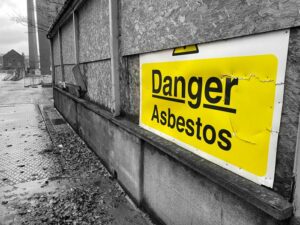A new report, drawing on millions of nitrous oxide (N2O) measurements from around the world, has found that N2O emissions from human sources – primarily farming – grew 40% between 1980 and 2020.
Agricultural production was responsible for 74% of N2O emissions from human sources in the 2010s, mostly from chemical fertilisers and animal waste on croplands – according to the report Global Nitrous Oxide Budget 2024, led by researchers from Boston College.
As a greenhouse gas, nitrous oxide is 300 times more potent than carbon dioxide and remains in the atmosphere for well over 100 years .
It is released into the atmosphere from human activities such as agriculture, fuel combustion, wastewater management and industrial processes, and makes up 40% of the total N2O in the atmosphere.
Hanqin Tian, the Schiller Institute Professor of Global Sustainability at Boston College said: ‘Nitrous oxide emissions from human activities must decline in order to limit global temperature rise to 2°C as established by the Paris Agreement. Reducing nitrous oxide emissions is the only solution since at this point no technologies exist that can remove nitrous oxide from the atmosphere.’
The team used measurements taken over the past four decades on land, in the atmosphere, freshwater systems and the ocean, making it, they believe, the most comprehensive assessment of global N2O ever undertaken.
In 2020, the concentration of N2O in the atmosphere was 336 parts per billion, a 25% increase over pre-industrial levels and much more than predicted by the Intergovernmental Panel on Climate Change.
Tian said: ‘This emission increase is taking place when the global greenhouse gasses should be rapidly declining towards net zero emissions if we have any chances to avoid the worst effects of climate change.’
In 1980, the world’s farmers used 60 million tonnes of commercial nitrogen fertilisers. By 2020, this had grown to 107 million tonnes, while another 101 million tonnes was generated by animal manure.
The countries producing the most N2O are: China, India, the United States, Brazil and Russia, although China are credited with having reduced their emissions since the mid 2010s.
While emissions from industry in the US have fallen slightly, agricultural emissions continue to rise.
Global Carbon Project Executive Director Josep Canadell, a research scientist at CSIRO, Australia’s national science agency said: ‘While there have been some successful nitrogen reduction initiatives in different regions, we found an acceleration in the rate of nitrous oxide accumulation in the atmosphere in this decade. The growth rates of atmospheric nitrous oxide in 2020 and 2021 were higher than any previous observed year and more than 30 percent higher than the average rate of increase in the previous decade.’
















40% increase is rather a lot ….interesting to know so much comes from farming. Thank you. Is there a link to the studies, please?.